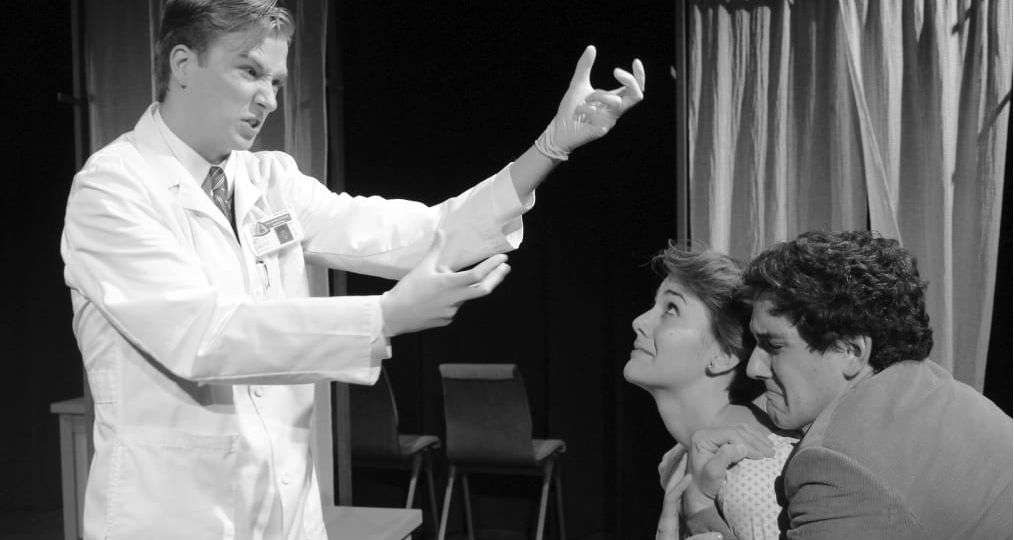
What do a teddy bear, a mysterious third person and Paris have to do with each other? They all help to create “Baltimore Waltz” by Paula Vogel, the first play of the St. Olaf Theatre season.
Jeanne Willcoxon, assistant professor of theater and the director of “Baltimore Waltz,” chose the play as a result of an independent study with former student Sophia Galloway ’13. The two examined the way that women are represented by playwrights, with special focus on female playwrights. The study brought Willcoxon to a realization: she had never directed a feminist play before. So why not begin with Vogel, who Willcoxon calls “unabashedly feminist” and “one of the greatest American playwrights”?
According to Willcoxon, Vogel handles gender and sexuality in a unique and interesting way. After considering which of Vogel’s plays would suit the needs of the St. Olaf theater community best, Willcoxen decided on “Baltimore Waltz,” a rapid-fire and hilarious play that navigates through both tragedy and comedy. The storyline follows a brother and sister as they set out for their final adventure together after the sister is fatally diagnosed with ATD Acquired Toilet Disease.
Becca Hart ’14, who plays the sister Anna, called the play “a fantastical, wacky, dream-esque play that develops because Vogel cannot cope with the death of her brother.”
The play’s storyline is indeed inspired by the death of Vogel’s own brother, Carl, who passed away as a result of the 90’s AIDS epidemic. Carl and Vogel had planned a final expedition through Europe together when he suddenly died. Vogel wanted to create something in remembrance of her brother, so she created the play and dedicated it to him. She writes “To the memory of Carl – because I cannot sew.” When asked what is the most important aspect of the “Waltz” script, Willcoxon highlighted this dedication because it reminds the viewer of the complexities of the AIDS epidemic and the people who have died.
“Thankfully, AIDS is no longer a death sentence,” Willcoxon said. “Those who used to work with AIDS patients helped them to die. Now they help them to live.” In a way, “Waltz” embraces this transition and celebrates life instead of focusing on death.
Still, it was Carl’s death that inspired the play’s whimsical atmosphere. The siblings’ fictional journey is at heart the fantastical odyssey Vogel and her brother never took. It plays to the abstract and allows for larger-than-life characters.
“The AIDS situation in the 90’s was ludicrous. The same absurdity is mirrored in the text,” Willcoxon said.
Despite its heartbreaking roots, “Waltz” thrives on comedy, lightning-quick shifts and an in-your-face-big theatre style.
“It’s unlike anything I’ve ever worked on before,” Hart said. “Every scene is a different style. We bounce from film-noir scenes to spy scenes to romance scenes at the drop of a hat. As an actor, it’s pretty exciting.”
One of the biggest challenges is found in the Third Man’s character, played by Andy Lindvall ’14. The character has over 12 separate roles to play, each complete with a costume change. Aimee Jillson, the costume designer, has designed costumes that only need slight alterations in order to preserve the sanity of the actor. Lindvall’s character is meant to be a film-noir-style character, inspired by the movie “The Third Man.” Willcoxon recommends that all audience members watch that film before seeing the show if they want to comprehend all of the play’s nuanced references.
Lindvall’s character was not the only role that was difficult to construct; the characterization process has been complex for all the actors. “It has been interesting to balance clown antics and real emotion,” Hart said. “There are deep feelings expressed through melodramatic pace and physicality.”
“The play is hilariously funny but deals seriously with sex and sexual language,” Willcoxon said. “Sex normally equates to life but here it is a symbol of death. If sex is not your cup of tea, this might not be your show.”
The play’s quirks have enabled exciting, fast-paced rehearsals. “Rehearsals are structured, but Jeanne allows for the actors to give suggestions and opinions on new ideas,” Hart said. Rehearsals have been a special challenge because of the short time frame the cast has had to prepare the show, beginning the process after arrival on campus just over a month ago. Still, the talents and passion of the actors have ensured an exciting finished product.
“We’ve got a tremendously fun, imaginative small cast,” Hart said. “Every single one of us always came into rehearsal ready to risk and ready to roll.”
“The Baltimore Waltz” runs Oct. 3-6 in Haugen Theatre. Tickets can be purchased online.
pilkingt@stolaf.edu

